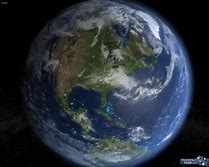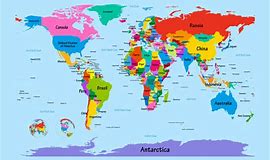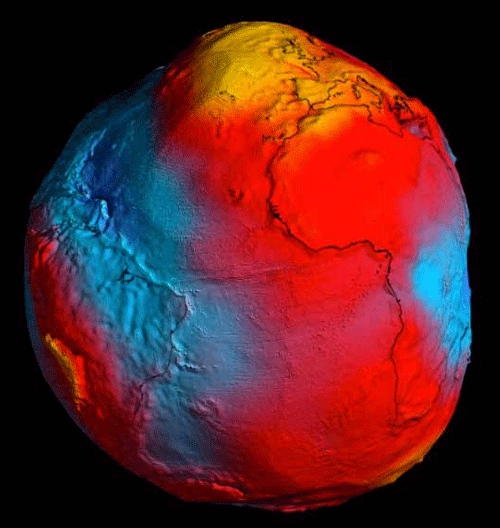A.D Vander Vliet, 2018-06-10
CONTENT:
World Belief Series:
Encountering the unknown:
Conclusion:
Agriculture and States:
Conciliation:
References
World Belief Series:
The theme of this series is ‘World Belief’ and aims at gaining an understanding of our human situation as a species on this planet today, considering our human heritage that stretches back 60k years. The first talk addressed this early shared origin starting in the present and tracing our development back over those millennia. This talk starts at the shared early origin and moves forward to our present time attempting to gain an understanding of humanity’s present diversity that emerged from that shared early beginning1).
The third talk will address the idea of ‘World Belief Teachings’, while the forth and last is tentatively titled ‘World Belief Destination’. The series at a whole does not develop a new or different belief, but rather the notion of ‘world belief’ is meant as supplement to present handed down and existing beliefs. The idea of supplement being as an attempt at finding common grounds and shared heritage in this rich, valuable and diverse human phenomenon.
Encountering the unknown:
Humans leaving what is today’s Continent of Africa, did so in groups of about 12 to 30 related members in a process that must have lasted many centuries. After about 20k years humans were present on all continents except Antarctica, based on found evidence of stone tools and fire. Humans faced many unknowns such as finding food to eat, shelter, stone for tools, preserving fire among other challenges.
Humans learned to know the animal cries, tracks, many plants as well as how to cope with the overwhelming presence of animals. Hence, many human communities named themselves ‘The people”, to set them selves apart from the many animals. Languages also developed and as we know today languages change with time and distance. As an example of the 7 000 present day languages on earth, 1 000 are spoken on the island of New Guinea by various tribes living in its numerous isolated valleys.
Humans are good at constructing a framework that relates their experience and knowledge. The result here is predictability about what is safe, good to eat and valuable to exchange in trade. However, human knowledge is limited and the unknown can present itself at any time, such as falling out of tree, a bite by a poisonous snake, an earth quake or flood. It is characteristic that all such events are given a rational by humans, past and present, because we have difficulty coping with uncertainty.
Events are caused by a power of some kind, which is often personified. The Ancient Greeks for example considered sun, moon and planets to be gods as they were able to move across the sky. Anthropologists agree that all human communities have a belief system that involves such higher powers to rationalise the unexpected. Whether these explanations are causal in the modern sense is not considered, as this is only a modern concept. The explanation had to be plausible, which was affected through stories. Examples are the creation stories that are found in many human traditions, including Genesis of the Old Testament, explaining where human came from. They are a sign of self awareness on the part of such communities.
The use of oracles is an example of how humans dealt with difficult decisions that could divide the community. Such oracles where often performed by shaman, who were not in a political power position, but were communicators with the higher powers. This way a decision could become acceptable politically without causing strive in the band or tribe.
Conclusion:
In a general sense we can say that when a human community encountered the limits of what could be explained within the known reference or belief framework, a person or procedure (casting stones) was called upon to communicate with the higher powers. This is the process of revelation, where existing human knowledge is further extended, which then can become part of the accepted framework of reference. Such revelation processes are accompanied by ceremonies, sacrifices and rituals and are still with us today. Their main function is to resolve the uncertainty caused by the intrusion of the unknown, which prevents humans from concentrating on their daily lives and tasks at hand. This is the functionality of this process which causal effect lies in the realm of human psychology and not in the one of cause and effect.
This type of living is often called the ‘Hunting and Gathering’ mode of life. I will use the designation ‘Nature Culture’ to include the way Hunter-Gatherers dealt with the many confrontations with the unknown that challenged their belief frameworks as they faced the higher powers that affected them, as they experienced that.
Agriculture and States:
The Nature Culture mode of living made use of social structures called bands, tribes and sometimes chiefdoms. This form lasted for about 50k years until the invention of agriculture now about 12k years ago. That is the time that global temperatures stabilised to the present fluctuations, making agriculture and animal domestication possible. At that time the great glacial melt took place, causing the Mediterranean Sea level to rise by about 300 feet. Before this time global temperatures had fluctuated in a range of 5 to 15 degrees at time every few centuries over millions of years. This was deducted from deep drill core record analysis done in the last decades of the twentieth century.
The social structure that humans lived in now changed from the Nature Culture type to that of State with a king at its head, a priesthood and temple services. This only happened in places where irrigation agriculture could be practiced and suitable grains were available or maize in the case of Meso America. These naturally occurring plants had to be modified for planting and harvesting. These processes had been discovered in this ‘State’ setting, because only it could support specialists that did not produce their own food!
To keep track of food supplies and animal transports, notation methods were invented to keep the traders honest. Eventually this led to elaborate forms of writing in all six2) major agricultural states the world over. We also know that all these states developed religions as they solved their problems of growing grain. The various processes that fostered growth were fertility gods and goddesses which were personifications for various stages of growth and harvest.
The development process of these religions was a necessity to organise society, but took place over a long time as humans learned the processes of agriculture through the interaction with the unknown, adapting and expanding the Nature Culture religious practices. It was a process of interacting with the unknown forces and powers that governed the processes of growing food and the domestication of animals. This was a challenging discovery process, because we now know that not many plants are edible nor can be grown and that many animals cannot be domesticated.
The religions that came into existence during this time of human development are a record of how humanity interacts with the unknown that it encounters at the limit of its knowing. This situation is still with us today as we make the discoveries that we consider important to our society. So, we should not ignore these records of human achievement, but study them with the respect that they deserve and help us guide our present actions in resolving some of our present social problems.
Conciliation:
One such problem for our present global human society is the ‘diversity of identities’ as that is expressed in our human religions, ideologies and value systems. This ‘talk’ cum essay aims to show that humanity journeyed to our diversity today along similar paths from a shared origin. It is thanks to modern science that we know about this shared beginning and our travelled paths to our present.
This talk and the ‘World Belief Origin’ illustrate two shared aspects among those diverse groups, namely their shared beginning and their similar journeys to our present human society. This ‘Belief Conciliation’ shows how different human groups came to differing identities, but all solving the similar problem of interacting with the unknown in various ways, over the many millennia.
Over the time of this development the unknown powers were designated and experienced as ‘Divine’ because of their mysterious nature and powerful affects. In this we recognise that humans as conscious beings are inherently confronted with this unknown as we are limited in what we can consciously know. In other words, the mystery is always present even though it is knowable, allowing us to interact with it. This interaction I call ‘revelation’ in which I include insight, discovery, bright ideas and similar events.
The history of human interaction with the mystery and the related revelations are recorded in our human religions showing us important aspects of human nature and how it acquires new knowledge in a mysterious existence. One thing that human religions share, is that all of them aim to improve the human experience and human behaviour. No religion suggests that that humans are a lost cause and that you may as well give up. Another important shared aspect among humanity is that each and every human society practices religion and holds concepts about the higher power, as reported by anthropologists.
Accepting religious expression as a general human phenomenon we can accept every different tradition as a unique way of interacting with the Divine as humans have experienced that in the past and still do in the present. The Divine as mystery vis a vis the human limited conscious capability is expressed in this rich variety of human religious expression and identity, like a composite and evolving mosaic.
As a symbol of our human sojourn as suggested in the essay cum talk I want to refer to the images below. One showing our planet earth and the other the world map of nations. The map depicting our earth-bound situation and the ‘blue planet’ symbolising humanity’s aspiring to celebrate our diverse civilisation as a species.
END


References:
- Reference for early humanity: “The World Until Yesterday”, Diamond, Jared. Penguin, 2012.
- Mesopotamia, Egypt, Indus Valley, China, Meso America, Inca in SA.
~~~~~

